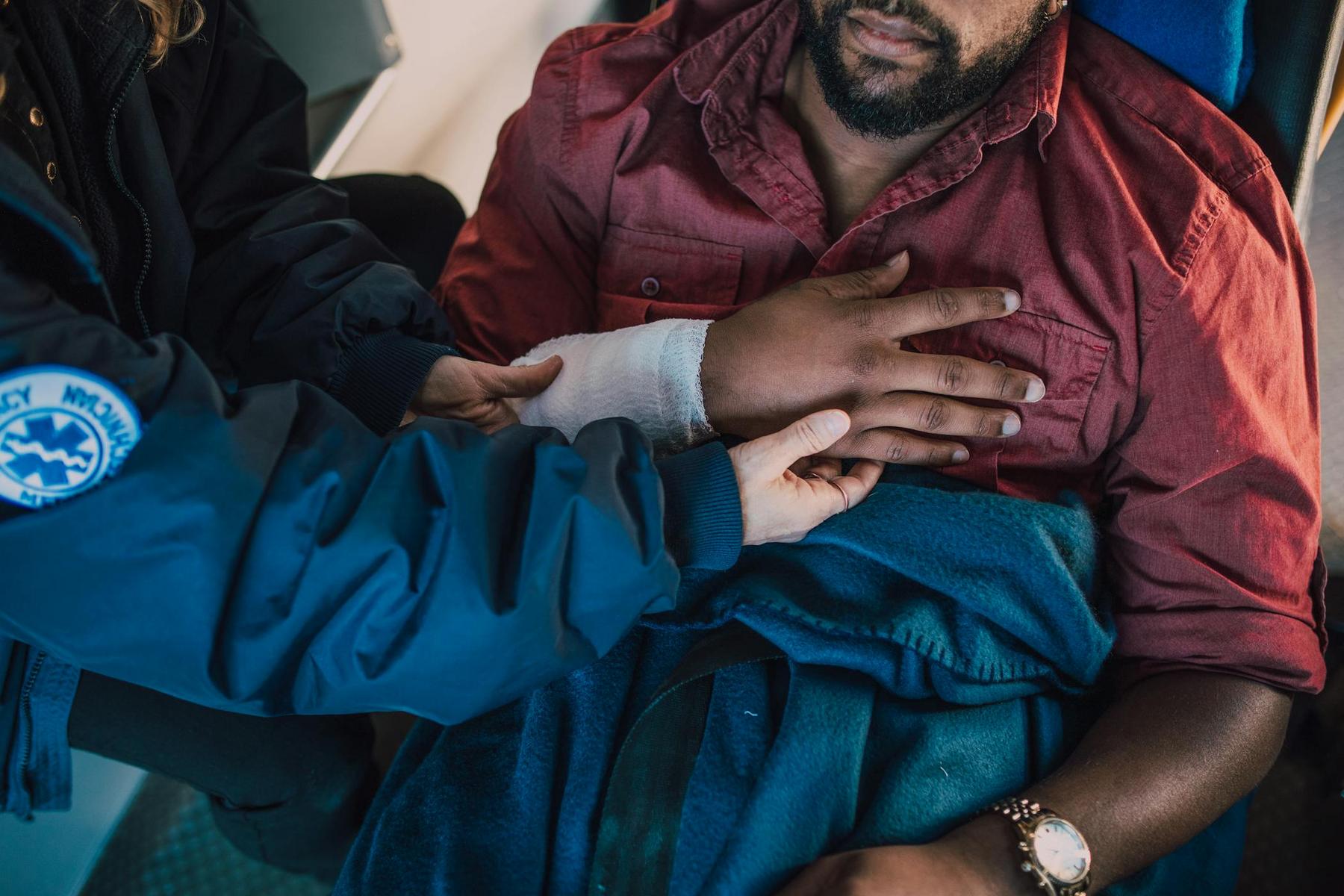When life throws unexpected challenges your way, knowing how to access emergency and respite care through the NDIS can make all the difference. Whether you’re caring for a loved one with a disability, or you’re an NDIS participant yourself, understanding these vital support systems ensures you’re never left without help when you need it most.
The reality is that emergencies don’t wait for convenient moments, and caring for someone with a disability can be physically and emotionally demanding. That’s precisely why the NDIS has built-in mechanisms to provide both immediate crisis support and planned respite care. From bushfire evacuations in Cairns to unexpected family emergencies in Brisbane, these services form a crucial safety net for thousands of Australians.
What Types of Emergency Support Can NDIS Participants Access?
Navigating emergency and respite care under the NDIS begins with understanding the comprehensive support framework available during crisis situations. The NDIS recognises that participants face unique challenges during emergencies, requiring specialised assistance that goes beyond mainstream disaster response.
Personal Emergency Evacuation Plans (PEEPs)
Every NDIS participant should have a Personal Emergency Evacuation Plan tailored to their specific needs. These plans are particularly crucial for participants with mobility limitations, sensory impairments, or cognitive disabilities who may require additional assistance during evacuations.
Your PEEP should detail your specific disability-related needs, including any assistive technologies you rely on and alternative transportation arrangements. For participants in Cairns, where cyclone season poses annual risks, these plans must account for early evacuation triggers and identify accessible safe refuge locations.
The plan should also incorporate communication strategies that work for you. Whether you use AUSLAN, picture cards, or specific technologies, emergency services need to understand how to communicate with you effectively during high-stress situations.
Emergency funding and Plan Variations
When unexpected circumstances arise, participants can request plan variations without undergoing a full reassessment. These variations address urgent changes in support needs, such as when your primary carer becomes unavailable or when natural disasters disrupt your usual support arrangements.
Emergency funding typically covers short-term interventions like temporary accommodation, additional staffing, or replacement of essential equipment damaged during disasters. In regions like Brisbane and Cairns, where weather events can significantly impact daily routines, this flexibility proves invaluable.
After Hours Crisis Referral Service
The After Hours Crisis Referral Service (AHCRS) provides a dedicated support line for emergency situations occurring outside business hours. Available to participants aged 18 and over, this service ensures immediate response when acute situations arise, such as sudden carer unavailability or accommodation emergencies.
This service proves particularly valuable for participants in regional areas around Cairns, where distance from urban support networks can create additional challenges during crisis situations.
How Does Short-Term Accommodation Work for Respite Care?
Short-Term Accommodation (STA) represents the NDIS’s primary respite care offering, providing temporary relief for both participants and their carers. Understanding how to access and utilise these services effectively can significantly improve quality of life for entire families.
STA Funding Guidelines and Eligibility
NDIS participants can access up to 28 days of Short-Term Accommodation per year, funded through their NDIS plan. This accommodation serves multiple purposes: providing respite for primary carers, developing life skills in new environments, and fostering social connections with peers.
| STA Purpose | Maximum Duration | Funding Type | Key Requirements |
|---|---|---|---|
| Carer respite | 28 days annually | Core or capacity building | Reasonable and necessary |
| Skill development | Varies by goals | Capacity building | Aligned with NDIS objectives |
| Crisis accommodation | Emergency duration | Plan variation | Urgent need demonstrated |
| Social participation | Weekend/short stays | Core funding | Community integration focus |
To be eligible for STA funding, the support must be reasonable and necessary for your disability-related needs. This means the accommodation should either provide essential respite for your carers or contribute to achieving your NDIS goals, such as developing independent living skills.
Types of STA Services Available
STA services range from overnight respite in disability-specific facilities to holiday accommodation that combines respite with recreational activities. In Brisbane and Cairns, participants can choose from various accommodation types, including group settings for social interaction or individual arrangements for those requiring intensive support.
The key is finding accommodation that matches your specific needs and preferences. Some participants thrive in social environments where they can build friendships, whilst others prefer quieter settings that reduce sensory overload.
What Should Providers Include in Emergency Response Plans?
For NDIS providers, navigating emergency and respite care under the NDIS requires comprehensive planning that meets both participant needs and regulatory requirements. The NDIS Quality and Safeguards Commission mandates specific elements in provider emergency response plans.
Staff Training and Emergency Preparedness
Providers must ensure all staff receive appropriate training in emergency procedures, including first aid, manual handling, and familiarity with individual participant emergency plans. This training becomes particularly crucial in regions like Cairns, where natural disasters occur regularly.
Staff need specific training on supporting participants with different disability types during emergencies. For example, supporting someone with autism during an evacuation requires different approaches than assisting someone with a physical disability.
Regular emergency drills ensure staff can execute protocols effectively, whether in Supported Independent Living homes, day programs, or community settings. These drills should simulate realistic scenarios relevant to the local area, such as cyclone preparations in Cairns or flood evacuations in Brisbane.
Emergency Equipment and Resource Management
All service locations must maintain 72-hour emergency kits containing essential supplies. These kits should include first aid supplies, portable chargers for communication devices and medical equipment, printed copies of medical records and emergency contacts, bottled water and non-perishable food, and flashlights and battery-powered radios.
Providers should conduct quarterly audits of emergency supplies, replacing expired items and updating contact information. For participants who rely on powered medical equipment, backup power sources become essential components of emergency preparedness.
Technology and Communication Systems
Modern emergency planning incorporates technology solutions that maintain communication during disasters. Providers increasingly use digital emergency plans accessible via mobile devices, ensuring staff can access critical information even when building systems fail.
Communication strategies must account for participants with different communication needs, including those who use AUSLAN, picture cards, or speech-generating devices. Emergency plans should specify how to maintain these communication methods during power outages or equipment failures.
How Can Families Prepare for Emergency Situations?
Family emergency preparedness for NDIS participants requires coordination between formal and informal supports. Families play crucial roles in emergency planning, often serving as first responders when crises occur.
Developing Family Emergency Plans
Your family emergency plan should complement your PEEP, identifying roles for each family member during different emergency scenarios. Consider who will stay with your loved one during evacuations, how you’ll transport essential equipment and medications, and where you’ll relocate if your home becomes uninhabitable.
For families in Cairns, cyclone preparation includes securing outdoor equipment, preparing evacuation bags with essential medications and comfort items, and identifying pet-friendly evacuation centres if applicable. Brisbane families might focus more on flood preparedness, ensuring important documents are stored safely and evacuation routes remain accessible.
Building Support Networks
Strong community networks prove invaluable during emergencies. Connect with other NDIS families in your area, sharing resources and offering mutual support. Many communities have informal networks that check on vulnerable residents during disasters.
Consider joining local disability advocacy groups or parent networks. These connections often provide practical advice about navigating emergency services and can offer temporary support when formal services become overwhelmed.
Emergency Communication Strategies
Establish multiple communication methods with your NDIS providers, including mobile phone numbers, email addresses, and social media contacts. During disasters, some communication methods may fail whilst others remain operational.
Create emergency contact cards with essential information about your family member’s disability, medications, and communication preferences. Emergency responders need this information quickly, and stress can make verbal communication difficult.
What Regional Considerations Apply in Queensland?
Navigating emergency and respite care under the NDIS in Queensland requires understanding regional disaster risks and local support networks. Both Cairns and Brisbane face unique challenges that influence emergency planning.
Cairns-Specific Emergency Considerations
Cairns residents must prepare for cyclone season annually, with emergency plans addressing potential isolation from mainland services. The Cairns District Disaster Management Plan emphasises preparation for cyclones and severe storms, requiring NDIS providers to integrate local protocols with their service delivery.
Remote communities around Cairns face additional challenges, with limited evacuation options and potential communication blackouts. NDIS participants in these areas need robust emergency plans that account for delayed response times and limited local resources.
Local cooling centres, including libraries and community hubs, serve as backup locations during extreme heat events. Providers should identify these facilities and ensure they’re accessible for participants with mobility limitations.
Brisbane Regional Factors
Brisbane’s flood history influences emergency planning, with providers needing evacuation plans for low-lying areas and backup locations outside flood zones. The city’s larger population provides more service options but can also mean longer response times during widespread emergencies.
Urban Brisbane offers advantages including multiple hospitals, emergency services, and transport options. However, traffic congestion during evacuations can delay response times, making early preparation crucial.
State-Wide Support Systems
Queensland offers Emergency Hardship Assistance grants providing up to $180 per person for temporary housing, food, and essential items during disasters. NDIS participants can access these grants alongside their NDIS supports, providing additional financial relief during crises.
The state’s disaster management framework coordinates with NDIS providers to ensure continuity of supports during recovery periods. This coordination proves essential for maintaining medication schedules, therapy appointments, and daily support routines.
Moving Forward with Confidence
Successfully navigating emergency and respite care under the NDIS requires proactive planning, clear communication, and understanding of available supports. Whether you’re preparing for Queensland’s weather challenges or simply wanting peace of mind about respite options, the NDIS framework provides comprehensive support mechanisms.
The key lies in preparation before emergencies arise. Work with your NDIS providers to develop robust emergency plans, understand your STA entitlements, and build strong support networks within your community. Remember that emergency planning isn’t just about responding to disasters—it’s about maintaining quality of life and independence regardless of circumstances.
By understanding these systems and preparing thoroughly, NDIS participants and their families can face unexpected challenges with confidence, knowing that appropriate supports are available when needed most.
Can I access emergency NDIS funding immediately during a crisis?
Yes, you can request plan variations for emergency situations without waiting for full plan reviews. Contact your NDIS planner or Local Area Coordinator immediately when emergencies arise. For after-hours crises, the After Hours Crisis Referral Service provides immediate assistance to participants aged 18 and over.
How much Short-Term Accommodation can I access each year through the NDIS?
Most NDIS participants can access up to 28 days of Short-Term Accommodation annually. This allocation can be used flexibly throughout the year for respite care, skill development, or crisis accommodation, depending on your individual plan and assessed needs.
What happens if my regular NDIS provider can’t deliver services during an emergency?
Your provider should have emergency response plans that include backup staffing arrangements and alternative service locations. If services become unavailable, contact your Local Area Coordinator or use the After Hours Crisis Referral Service to arrange temporary supports. Emergency funding may be available to cover additional costs.
Do I need to live in a high-risk area to have a Personal Emergency Evacuation Plan?
No, all NDIS participants benefit from having emergency plans regardless of location. Even urban areas can encounter challenges like power outages, transport disruptions, or family emergencies that affect support arrangements. Your plan should address various scenarios relevant to your needs.
Can my family access respite care through the NDIS even if I live at home?
Yes, Short-Term Accommodation is available for participants living at home, providing essential respite for primary carers. The service recognises that family carers need breaks to maintain their own wellbeing while continuing to provide support long-term.



